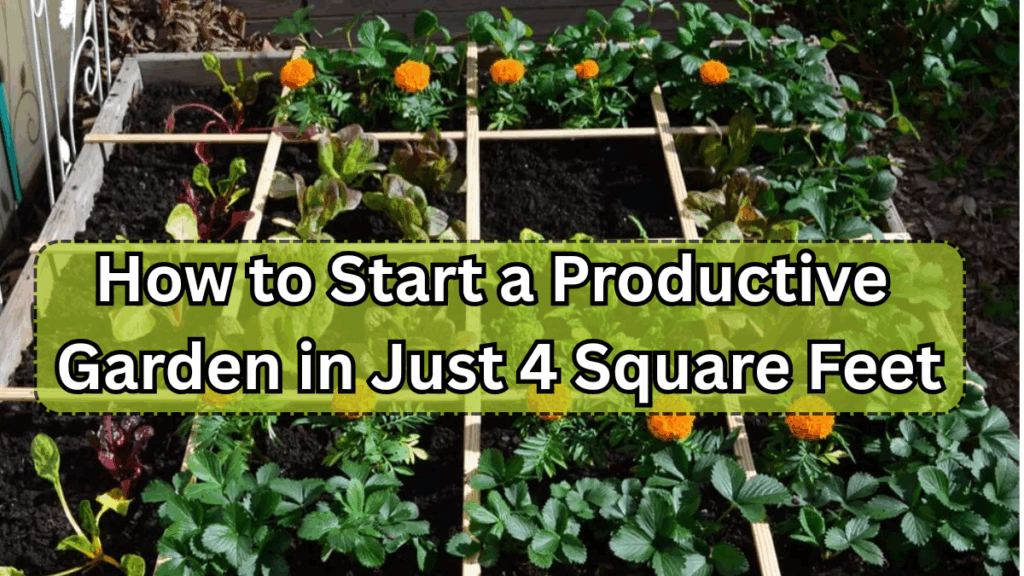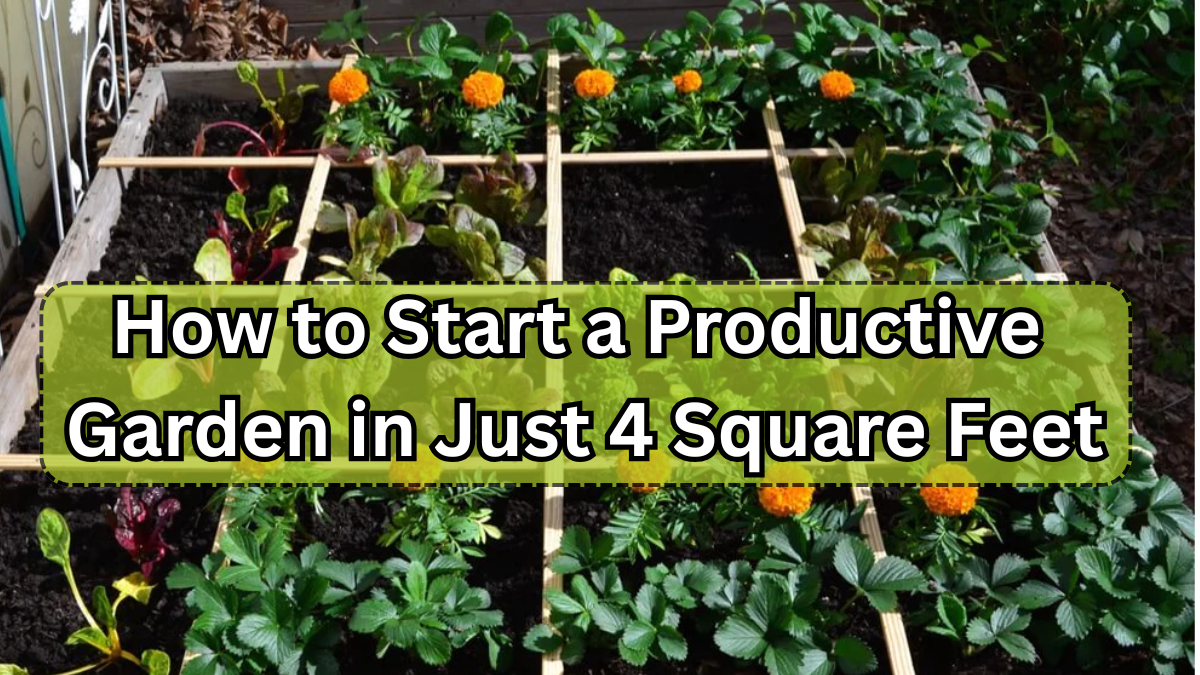Creating a flourishing garden doesn’t always require acres of land. Even a tiny patch of just 4 square feet can yield fresh vegetables, herbs, and flowers if planned carefully. With micro gardening techniques and a smart small garden layout, you can make the most of limited space while enjoying the joys of gardening.

Why Choose a 4-Square-Foot Garden?
Gardening in tight spaces is not only fun but also practical. Here’s why starting a tight space garden is a great idea:
-
Maximizes space: Perfect for balconies, patios, or small backyards
-
Reduces maintenance: Smaller areas are easier to water, weed, and manage
-
Encourages productivity: With proper planning, every inch is utilized
-
Supports sustainability: Grow your own fresh produce and reduce grocery trips
Planning Your Small Garden Layout
A smart small garden layout is key to getting the most out of your 4-square-foot garden. Start by dividing the space into a grid—usually 1-foot squares work best. This allows for easy planning and planting.
Example of a 4×4 Square-Foot Garden Layout
| Square | Plant Idea | Tips for Growth |
|---|---|---|
| 1 | Tomatoes | Stake early; prune lower leaves |
| 2 | Lettuce | Harvest outer leaves gradually |
| 3 | Basil | Needs full sun; pinch to grow |
| 4 | Radishes | Quick-growing; succession plant |
| 5 | Spinach | Keep soil moist; partial shade |
| 6 | Carrots | Deep, loose soil required |
| 7 | Chives | Trim regularly; full sun |
| 8 | Peppers | Support stems; consistent water |
| 9 | Marigolds | Pest deterrent; full sun |
| 10 | Arugula | Fast-growing; partial shade |
| 11 | Parsley | Keep moist; pinch to harvest |
| 12 | Beets | Thin seedlings; fertile soil |
| 13 | Strawberries | Raised edges prevent rot |
| 14 | Thyme | Drought-tolerant; full sun |
| 15 | Green onions | Successive planting works best |
| 16 | Cilantro | Partial shade; pinching helps |
Using this efficient layout, you can grow a variety of crops without overcrowding your 4-square-foot garden.
Essential Tips for Micro Gardening in Tight Spaces
-
Use Vertical Space: Trellises, hanging pots, and stacked planters increase growing area
-
Choose Companion Plants: Some plants grow better together, deterring pests and enhancing flavor
-
Rotate Crops: Keep soil fertile by rotating leafy greens, root vegetables, and herbs
-
Invest in Good Soil: Nutrient-rich, well-draining soil is key to high yields
-
Water Smartly: Small gardens dry out faster; use drip irrigation or self-watering containers
-
Succession Planting: Plant fast-growing crops after harvesting early ones to maximize production
Best Plants for a 4-Square-Foot Garden
Here are some ideas for your micro gardening project:
-
Tomatoes: Indeterminate varieties work best in vertical containers
-
Lettuce and Spinach: Quick harvest and easy to regrow
-
Herbs: Basil, parsley, thyme, and chives thrive in small spaces
-
Root Vegetables: Radishes, carrots, and beets prefer deep, loose soil
-
Companion Flowers: Marigolds and nasturtiums help protect crops naturally
Advantages of Efficient Layouts in Micro Gardening
| Feature | Benefit |
|---|---|
| Grid-based planting | Ensures optimal spacing for each plant |
| Succession planting | Maximizes harvest throughout the season |
| Vertical gardening techniques | Doubles or triples available growing space |
| Companion planting | Reduces pests and improves yield |
A well-planned efficient layout helps ensure every inch of your tight space garden produces healthy, thriving plants.
FAQs
Q1: Can I grow tomatoes in a 4-square-foot garden?
Yes! Choose compact or determinate varieties and provide a stake or cage for support. Tomatoes do well when planted in a corner of your small garden.
Q2: How often should I water a tiny garden?
Small gardens dry out faster than larger beds. Water daily during hot weather or use self-watering containers for consistency.
Q3: Can I grow a variety of crops in a tight space?
Absolutely! By using a grid-based small garden layout and practicing succession planting, you can mix vegetables, herbs, and flowers efficiently.
Q4: Do I need special soil for micro gardening?
Yes. Choose nutrient-rich, well-draining soil. Mixing compost and organic matter ensures high yields in small areas.
With a little planning, micro gardening can transfo
Click here to learn more
